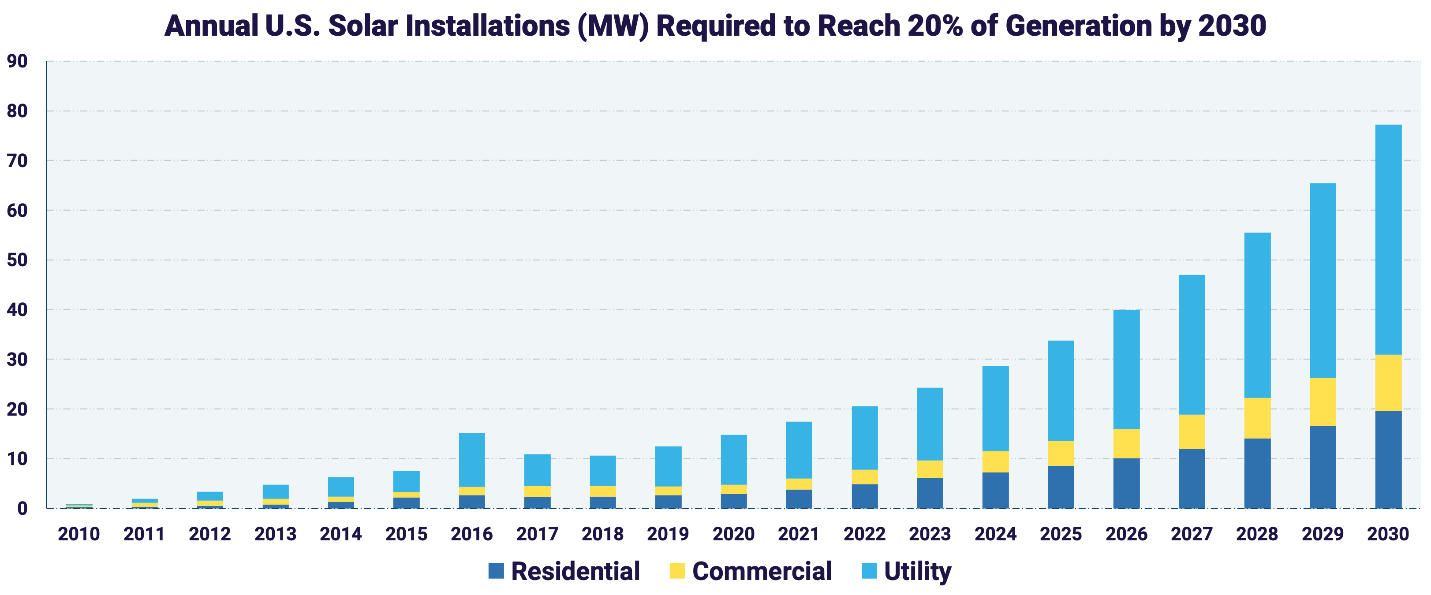- This roadmap offers a vision for the radical transformation of the nation’s energy system.
- It articulates where the solar industry stands today, sets the industry’s goal for the next decade and outlines the steps that must be taken to get there.
- SEIA also explains how the solar industry will expand exponentially from comprising 2.4 percent of the U.S. electricity mix today to 20 percent by 2030.
Utah and Washington, D.C. — As part of the first steps into the Solar+ Decade, the Solar Energy Industries Association (SEIA) released a roadmap that puts solar energy on a path to reaching 20 percent of U.S. electricity generation by 2030.
The roadmap is a 10-year strategic vision for the solar industry that highlights both opportunities and systemic challenges the industry will need to overcome to reach its goals.
“The Solar+ Decade represents opportunity and a paradigm shift as we transform energy use in America,” said Abigail Ross Hopper, president, and CEO of SEIA. “When we hit this goal, by 2030 we will more than double our workforce and add $345 billion in private investment, all while offsetting electricity sector emissions by 35 percent. But we can’t get there on momentum alone. We’ll need policies, alliances, and action from every member of the industry to make these goals a reality,” she continued.
Earlier this year, SEIA laid claim to the 2020s, as the Solar+ Decade to signify the leading role solar and its partners will play in reimagining our energy landscape. The roadmap spells out the benefits of reaching 20 percent solar by 2030, as well as the collaborations, policy mechanisms, and growth management the industry will need to make solar the leading source of new electricity generation.

To achieve this goal, the solar industry will need to consider:
Collaborations: A cohesive solar industry and external partnerships will be key to the industry’s success. Partnerships with storage, wind, and other technologies will be critical to advance grid infrastructure and change how we generate, distribute and consume energy.
Market Accelerators: Economic and political forces outside of the solar industry, like energy storage, carbon reduction goals, and the further electrification of our economy have their own momentum and solar will need to continue to ride this wave of success.
Market Levers and Policy Drivers: Reaching 20 percent solar by 2030 will depend on a variety of factors, including the industry’s ability to find new opportunities for cost reductions and to move or change policies that can drive growth. The industry will need to streamline permitting challenges to reduce costs, continue its push on net energy metering and other state-level policy in emerging markets, and pass an extension of the ITC to continue growth.
Growth Management: The industry must consciously build a strong foundation to support itself. We must proactively address cybersecurity, recycling, and land use challenges, as well as grid modernization and the inclusive, equitable distribution of opportunities in solar.
Numerous benefits, including the deployment of 500 gigawatts by the end of 2030 and a sharp reduction in emissions are on the line.
“As the solar industry prospers, we must be thoughtful about who’s benefiting from solar and the enormous economic and climate benefits it will bring,” said Ms. Hopper. “Together we can show that the Solar+ Decade is a story of inclusive growth that will both lift our communities and tackle our pressing climate challenges.”














Comments